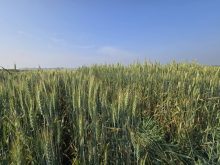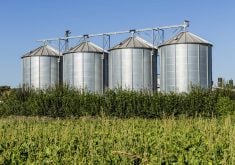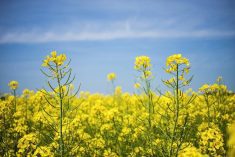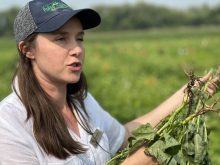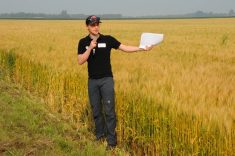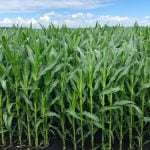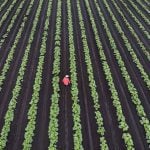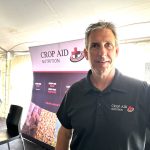Manitoba pulse growers should be preparing for fungicide applications as field peas reach critical growth stages, according to the province’s pulse specialist.
“Things are approaching relatively quickly for fungicide application,” said Dennis Lange, adding that it’s important producers be able to distinguish between bacterial blight and mycosphaerella when evaluating disease in their crop.
Making the wrong diagnosis means wasted money and effort.
Read Also
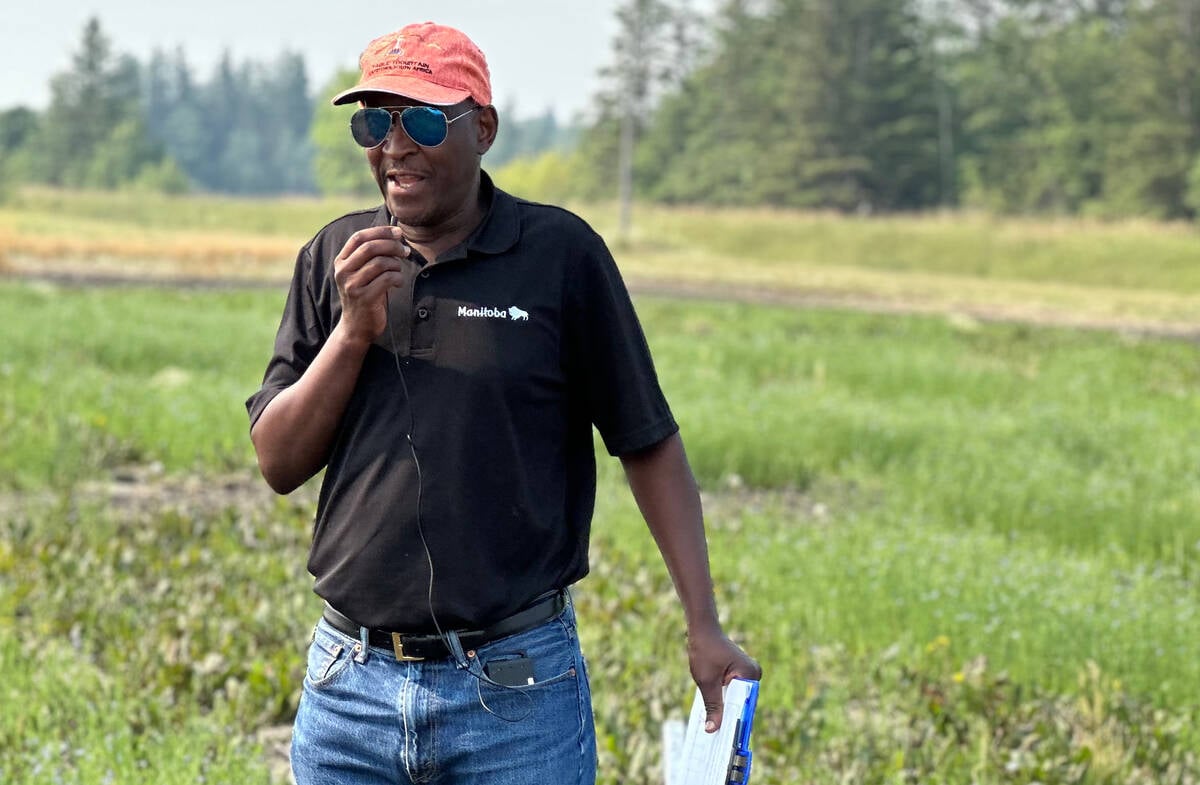
How much nitrogen can farmers really cut?
Manitoba fertilizer trials look for nitrification inhibitor sweet spot, to lower greenhouse gas emissions and cost without hurting yield.
WHY IT MATTERS: Manitoba hasn’t had the disease-friendly rains of previous years in 2025, but farmers are still urged to scout for lurking blight in their pulses and soybeans.
Bacterial blight typically appears in the upper to mid-canopy after weather events like wind or hail, often showing as brownish lesions that ooze.
As a bacterial issue, applying a fungicide will not have the impact farmers want, Lange warned participants of a Manitoba Agriculture Crop Talk webinar June 18.
Outside of peas, bacterial blight is also one of the first foliar diseases to occur on soybeans, according to the Crop Protection Network’s website. While it doesn’t often lead to serious yield loss, the disease can progress to the point where lesions grow together to produce large dead areas.
Mycosphaerella blight, meanwhile, starts in the lower canopy and appears as small purple freckles on leaves.
According to the Manitoba Pulse and Soybean Growers website, mycosphaerella is “the most widespread and economically damaging foliar disease in Manitoba field peas.”
“Infection can lead to reduction in field pea grade, productivity and even seed yield, if severe widespread infection occurs early in the growing season,” the industry group warns.
Data out of a Manitoba disease survey in 2017 found mycosphaerella in all surveyed pea fields, with an average severity of 4.5 on a scale of zero to nine.
This fungal disease can be controlled with timely fungicide applications, Lange said.
“Peel back the canopy and look down into the lower canopy, the lower leaves, to see if there’s any lesions showing up.”

While fungicide resistance in Manitoba has not been confirmed, there is evidence that parts of Saskatchewan and Alberta are seeing less control of the pathogen Mycosphaerella pinodes in crops treated with pyraclostrobin, according to the Manitoba Pulse and Soybean Growers website.
When to apply fungicide
Farmers with a mycosphaerella problem will want to take care of it before lesions compromise stems — something that can lead to lodging and crop quality loss. Fungicide can’t turn back the clock after all; what was damaged at the time of fungicide application will remain damaged.
Lange suggested that fungicide be applied before or during early development of mycosphaerella.
Several factors should be weighed before spraying, including active symptoms, how dense the crop stand is and both current and future weather conditions.
The Manitoba Pulse and Soybean Growers has published a worksheet to help producers evaluate risk for their field and guidance on whether a spray pass is warranted. Farmers using the tool are advised to conduct bi-weekly field scouting to keep tabs on their risk and then weigh that with the cost of a fungicide past.
Ideal timing for fungicide application is at beginning of bloom. Good canopy penetration and thorough leaf coverage should be a priority. A single, well-applied pass is usually enough to head off mycosphaerella, but if symptoms move up the canopy and the farm has wet conditions, the farmer may need a second application 10 to 14 days after the first, using a different fungicide group.




